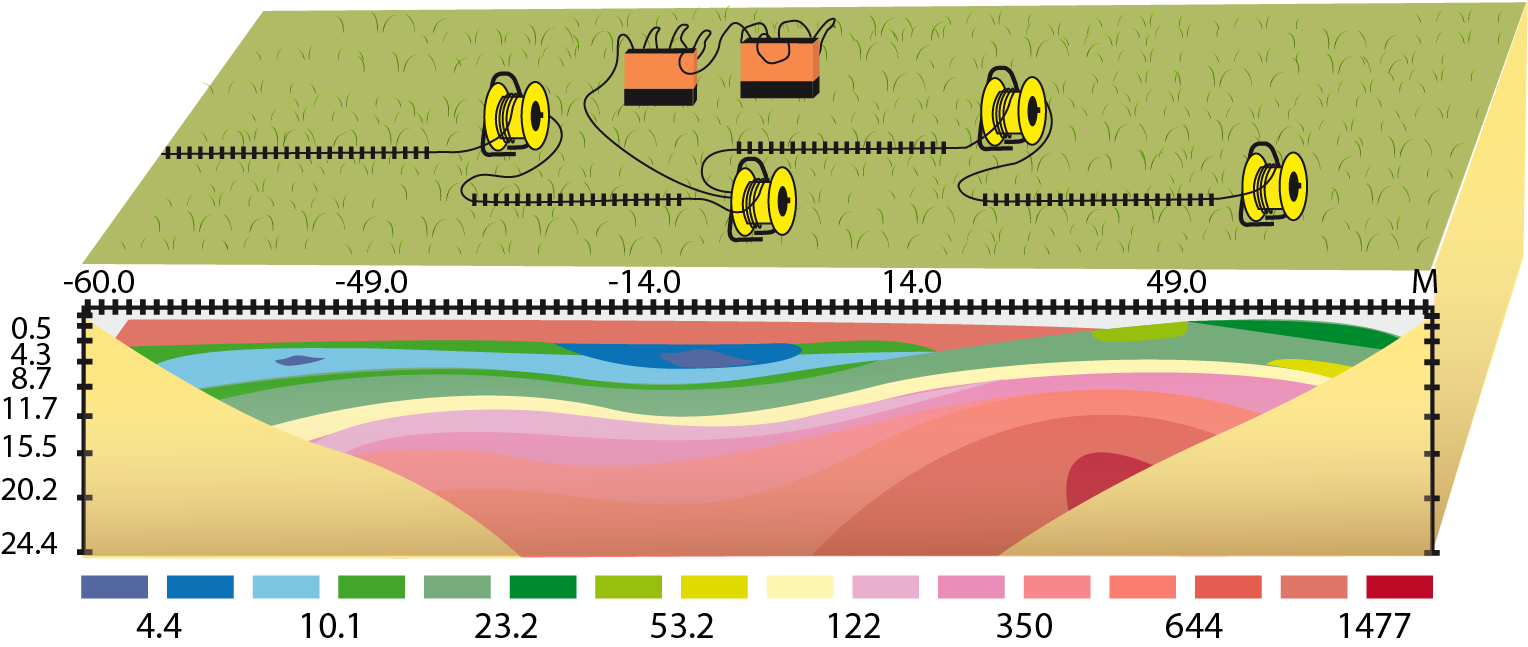ELECTRIC TOMOGRAPHY
It is a resistivity multielectrode method based on terrain resistivity modeling 2-D and 3-D by means of the use of numeric techniques (finite elements or finite differences.) The birth of electric tomography has proved to be a quality spectacular leap forward with respect to conventional resistivity methods.
Based on these basic concepts, the great electric tomography method innovation with respect to conventional methods lies in the fact that nowadays all measures will be realized totally in a completely automatic way, without the need to move manually any electrode.
This is due in part to the fact that on one side we will be working on a great number of electrodes in the ground (arranged equally in space), and on the other side to the fact that our resistivity measurement device will be in charge of doing automatically all preestablished measurement sequence, setting up, according to all predefined specifications, all possible 4 electrodes combinations.
Based on these basic concepts, the great electric tomography method innovation with respect to conventional methods lies in the fact that nowadays all measures will be realized totally in a completely automatic way, without the need to move manually any electrode.
This is due in part to the fact that on one side we will be working on a great number of electrodes in the ground (arranged equally in space), and on the other side to the fact that our resistivity measurement device will be in charge of doing automatically all preestablished measurement sequence, setting up, according to all predefined specifications, all possible 4 electrodes combinations.

MAIN APPLICATIONS
- Subterreanean waters search
- Pollution detection in soil and aquifers
- Cavities detection
- Archeological studies
- Geotechincal studies
- Metal deposit exploration
Geofísica Argentina © - 2015 - (All rights reserved)
Address: Bº UDAP II Mna F C17 - Rivadavia - San Juan - Argentina
Phone numbers:
+54 9 264 4854870 - +54 9 264 5883048 - +54 9 264 5318547
E-mail: info@geofisicaargentina.com
Address: Bº UDAP II Mna F C17 - Rivadavia - San Juan - Argentina
Phone numbers:
+54 9 264 4854870 - +54 9 264 5883048 - +54 9 264 5318547
E-mail: info@geofisicaargentina.com
Web design: Pica Estudio




